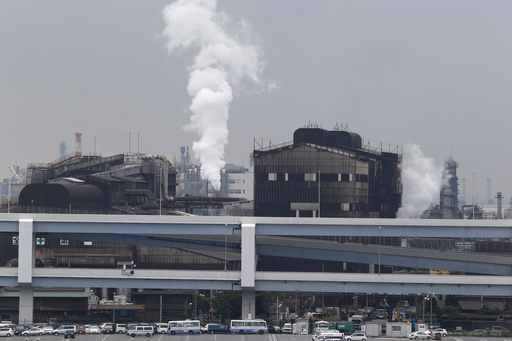
TOKYO — On Tuesday, Japan’s government unveiled its latest decarbonization objectives, pledging to cut greenhouse gas emissions by over 70% from 2013 figures within the next 15 years. This announcement is part of an updated energy strategy crafted to help achieve the nation’s ambition of carbon neutrality by the year 2050.
Japan’s new climate objectives include a goal of reducing carbon emissions by 60% by 2035 compared to 2013 levels and a 73% decrease by 2040. Previously, the nation had set a target to cut emissions by 46% by 2030. These objectives are categorized as Nationally Determined Contributions (NDC) under the overarching Paris Agreement, and Japan will submit these targets to the United Nations for acknowledgment.
Environmental advocates have voiced concerns regarding Japan’s 2035 target, which is still short by 6 percentage points of what is required to restrict global temperature increases to 1.5°C above pre-industrial levels, as stipulated by the Paris Agreement. This criticism highlights the ongoing challenges Japan faces in reducing its dependence on fossil fuels.
As part of its revised energy strategy, Japan plans to substitute the previous framework established in 2021, promoting renewable energy sources to fulfill half of the nation’s electricity demands by 2040. Additionally, the plan emphasizes increased reliance on nuclear power to meet the rising energy needs associated with advancements in technology, all while adhering to established decarbonization goals.
The new energy framework signifies a shift from the prior policy aimed at phasing out nuclear energy, which was put in place following the 2011 Fukushima Daiichi disaster that resulted in significant displacement and ongoing public resistance to nuclear power. The updated plan seeks to increase nuclear energy’s contribution to Japan’s energy supply to 20% by 2040. Meanwhile, the role of renewable energy is projected to rise to 40-50%, while coal usage is anticipated to decrease to 30-40% from its current nearly 70% share.
In 2030, the existing plan sets forth targets of 20-22% for nuclear energy, 36-38% for renewables, and 41% for fossil fuels. The newly proposed framework identifies renewables as the leading energy source and encourages the innovation of next-generation energy technologies such as solar batteries and mobile solar panels.
Realizing the increased nuclear energy target appears challenging, as the approval process by nuclear regulators remains slow and various safety concerns persist, accompanied by public resistance in nearby communities. For Japan to reach the stipulated 20% target, nearly all of its 33 operational reactors would need to be restarted. As it stands, nuclear energy comprised only 8.5% of Japan’s power supply in 2023, with merely 13 reactors currently active.
The plan emphasizes the need to expedite the recommencement of reactors that comply with post-Fukushima safety regulations while also suggesting the development of next-generation reactors at facilities where existing reactors are in the decommissioning process.
Adding to the dialogue surrounding nuclear energy, Rafael Grossi, the Director General of the International Atomic Energy Agency (IAEA), made a visit to the Kashiwazaki-Kariwa nuclear power plant—the largest in the world—located in Niigata Prefecture, marking the first time an IAEA chief has visited the facility. His purpose was to evaluate the safety protocols of the plant as it prepares to restart two of its seven reactors, which have successfully passed safety assessments following various challenges.
The Japanese government is advocating for these restarts as part of its energy and climate strategies, and a successful restart would assist Tokyo Electric Power Company Holdings, which continues to grapple with the immense costs associated with decommissioning the damaged Fukushima Daiichi plant. However, significant uncertainties remain about when a restart might happen due to ongoing safety apprehensions from local residents living near the facility.

